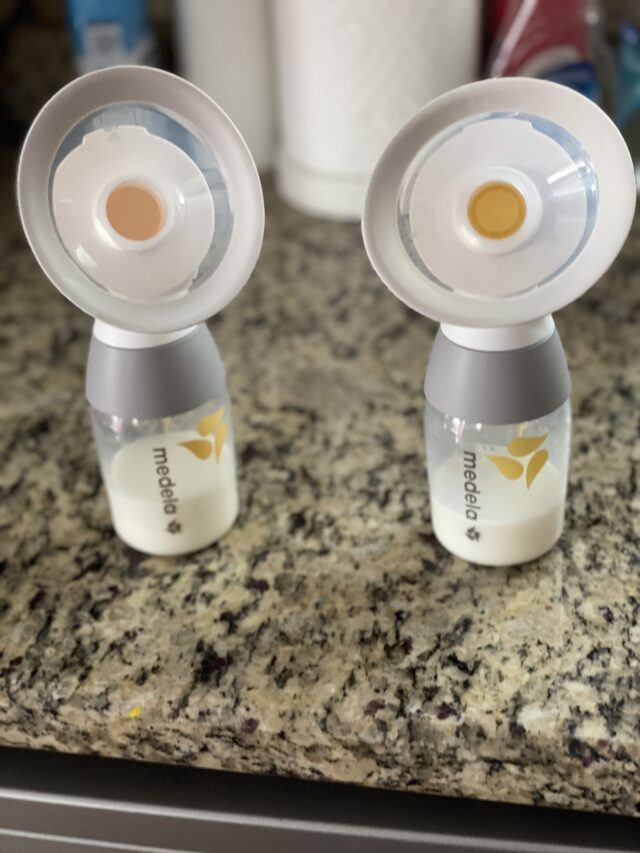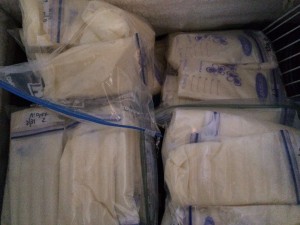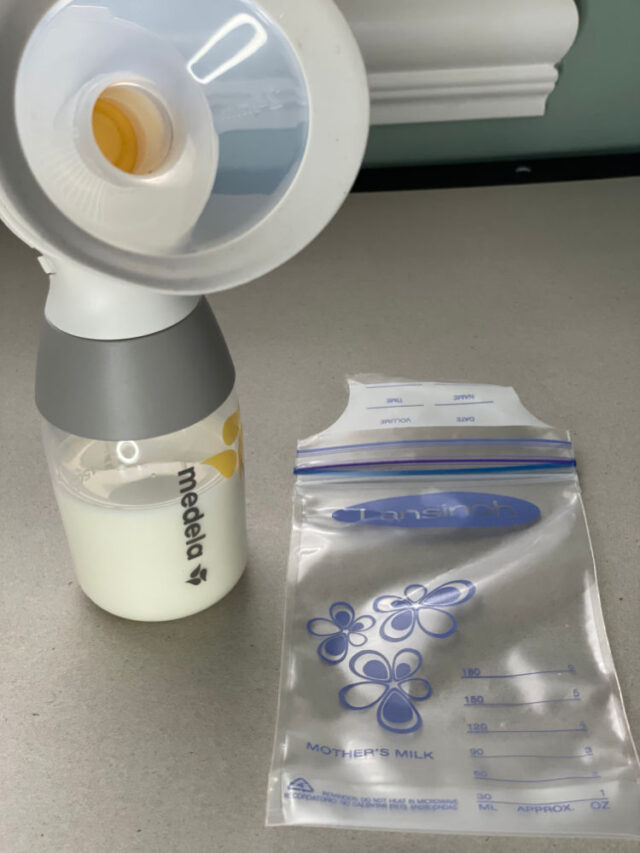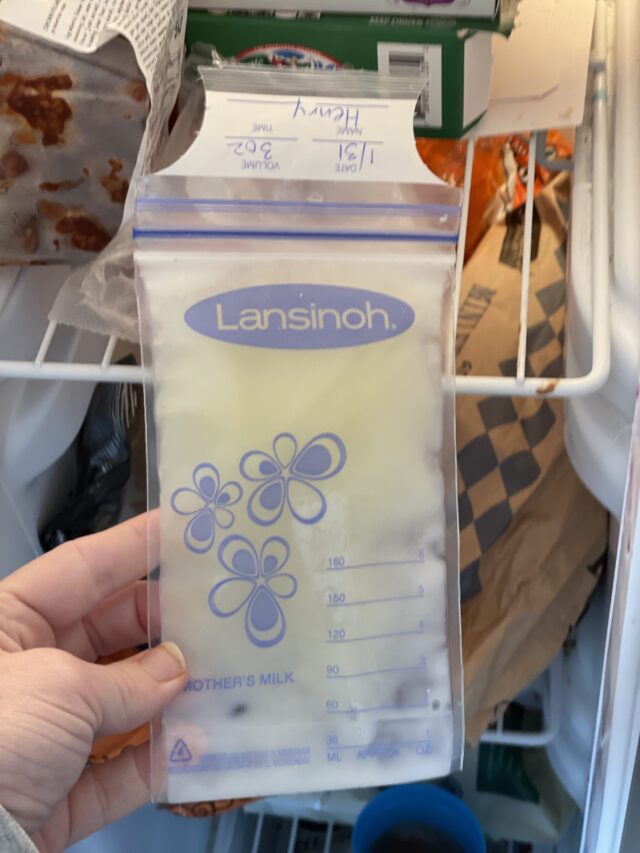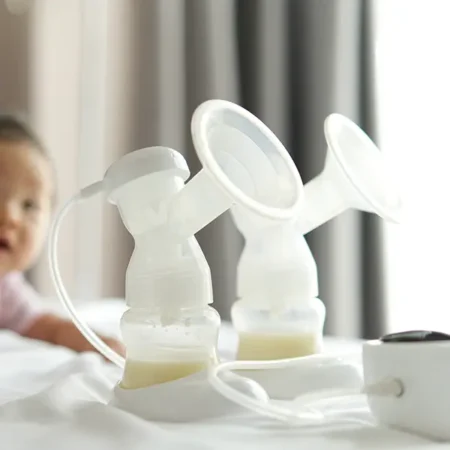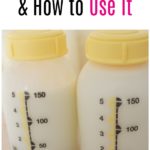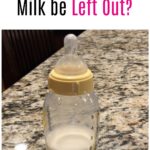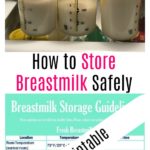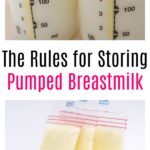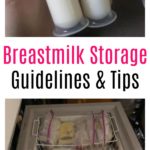Wondering how to store breast milk? Here’s everything you need to know about storing breast milk at room temperature, in the refrigerator, and in the freezer.
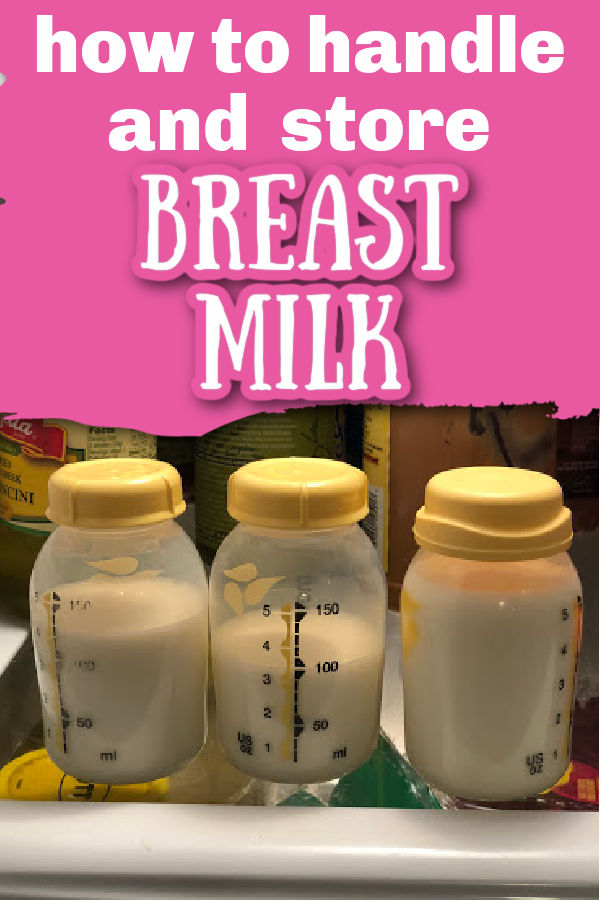
This post may contain affiliate links, which means that if you click a link and take action, I may make a small commission at no additional cost to you. I only recommend products I love! More info here.
Once you’ve pumped your milk, what do you do with it? You can:
- Feed it to your baby at the next feeding
- Store it in the refrigerator
- Freeze it
Below are summaries and best practices regarding each of these options.
Storing at room temperature and feeding fresh milk
One option that can be easiest when you’re exclusively pumping or pumping to feed your baby in the next few hours is to keep your milk at room temperature and feed it fresh.
This is pretty straightforward – once you’ve finished pumping, you can set it aside and then give it to your baby when he or she is hungry.
How long can breast milk stay out?
Freshly pumped milk can safely stand at room temperature for at least 4 hours. (Slightly longer – up to 6 to 8 hours – may be acceptable depending on the ambient temperature.)
Reusing expressed breast milk
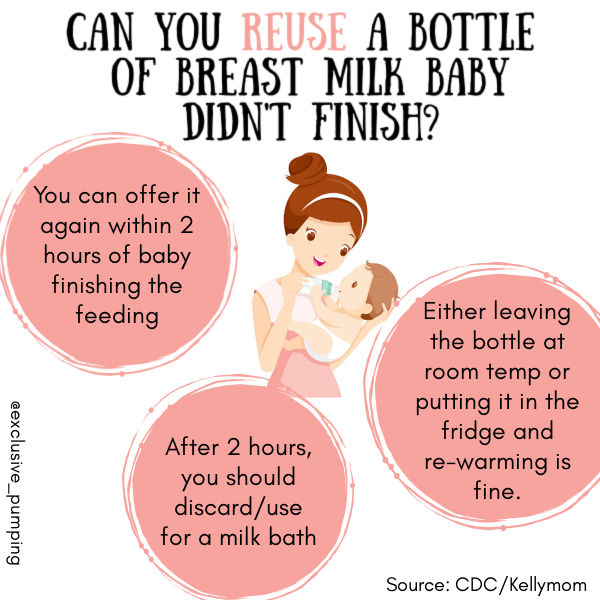
What if your baby starts a bottle, but doesn’t finish it?
You can offer it again within two hours of when baby finished the first feeding.
What should you do with the milk during those 2 hours? Some parents choose to leave the milk at room temperature, and others prefer to refrigerate and rewarm. Because no studies have been done, we don’t know which is better.
Storing in the refrigerator
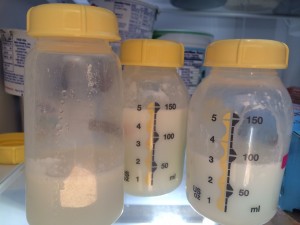
Breast milk storage guidelines for refrigerated milk can vary quite a bit. The CDC says breast milk in the fridge is fine for 4 days, while other sources will say up to 8 days. If possible, I would aim to use or freeze milk in the fridge within 3-4 days.
If you have a number of bottles in the refrigerator at any given time, it is a good idea to label them with the pump date (you can use a piece of masking tape or a dry erase marker) or order them with the oldest bottles in front so that they are used first.
Mixing breast milk is fine. Treat the mixed milk as if it was all pumped on the first pump date/time.
Over time, cream will rise to the top of the milk as it is stored in the fridge. This is normal and nothing to worry about.
The pitcher method
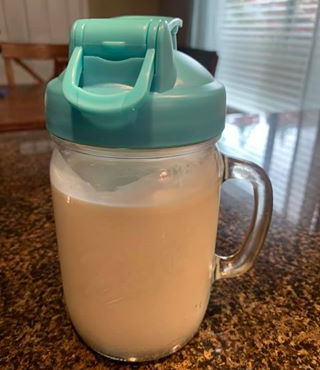
If you’re exclusively pumping and have a lot of bottles in your fridge, you may want to try the “pitcher method.”
This just means combining all the milk that you pump in one day into a large container (like a Dr. Brown’s pitcher or mason jar).
Then, at the end of the day, you prep bottles for the next day and freeze any extra milk.
More on the pitcher method here.
Warming the milk for feeding
When you are ready to feed your refrigerated milk to your baby, you may need to warm it. (Cold bottles are fine if your baby will take them, but many will not.)
There are a few different ways you can do this:
- Use a bottle warmer
- Put it in a container of warm water
- Run it under warm water in the sink
Never microwave breast milk or formula, as the microwave can create “hot spots†that will burn the baby’s mouth, and make sure to check the temperature after warming by squirting a bit on your wrist or hand.
Freezing breast milk
Frozen milk can be stored in most freezers for up to 12 months, though the CDC says up to 6 months is ideal. (The CDC used to have different guidelines for regular freezers and deep freezers, but they no longer distinguish between the two.)
If you’re freezing milk in the freezer compartment of a mini-fridge, that should be used within 2 weeks.
If you have frozen milk that you’re not sure is still good, you can test it with MilkStrips. (More on these test strips here.)
How frozen milk should be stored
Breast milk can be frozen in glass or plastic bottles or breast milk storage bags. If you have a small freezer stash, you might want to use reusable breast milk bags; if you are building a larger one, you’d want to use disposable bags.
When freezing the milk, label it with:
- The date the milk was pumped (if you have milk from more than one pumping session in the same bag, use the earlier date). You can include the time the milk was pumped as well, but this is usually less important.
- The amount of milk in the container.
- Your child’s name (if your child will be using the frozen milk in a childcare setting).
How much milk should you freeze in each bag?
There is no correct answer here – you kind of have to figure out a system that works for you.
Many sources recommend storing milk in 1-4 oz portions so you don’t waste milk. This will work fine – if it turns out you need to thaw a bag with more milk than you need, you can thaw it in cold water and store the rest for later. You’d just need to use it within 24 hours.
When should you start freezing milk?
This also doesn’t have one correct answer. I would suggest starting to freeze your milk whenever you have a little extra that you won’t need in the next few days. (If you’re wrong and you do need it, you can always thaw it and use it.)
More on when to start freezing milk here and how much you want to store here.
Using frozen breast milk
There are a few different ways that you can thaw milk:
- Put the milk in the refrigerator to thaw slowly (it will take about 12-24 hours)
- Place the milk in a container of cold water
- Put the milk in a container of warm water (thaws and warms the milk at the same time)
If you plan to use only part of the milk in the bag, or if you’re defrosting for a later feeding (for example, if you’re prepping bottles for the next day’s childcare), you’ll want to thaw the milk in the fridge or in cold water. Otherwise, warm water can be easiest since there’s no separate warming step.
Frozen milk should not be thawed at room temperature.
More on defrosting breast milk here.
How to use milk once it’s thawed
Once frozen breast milk has been thawed, it should be used within 24 hours.
Frozen milk should not be refrozen.
Rotating frozen milk
A few weeks after you start freezing milk, consider starting to rotate your milk. This just means using the oldest milk in your freezer for a feeding, and replacing it with the milk that you would have fed your baby.
Before building up a large freezer stash, it’s a good idea to give your frozen breast milk a test run with your baby. This is just to make sure that you don’t have a lipase issue.
Storing breast milk in a cooler
Breast milk can be stored for up to 24 hours in a cooler. (More on breast milk coolers here.)
If you need to travel with fresh or frozen breast milk, here are some tips for packing your breast milk.
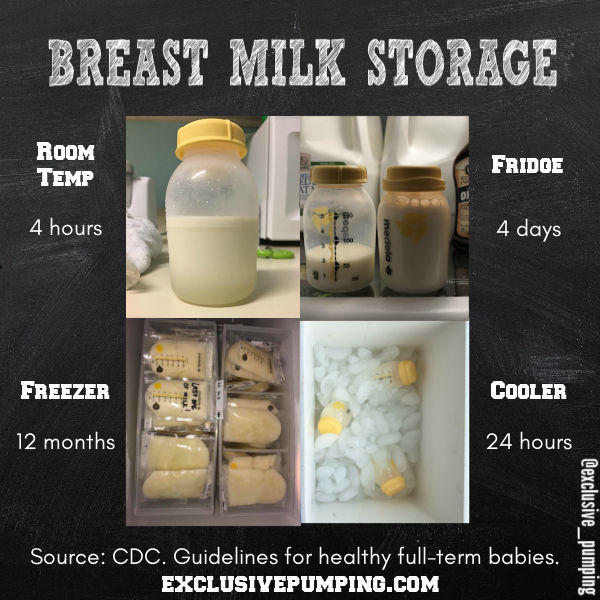
Do you have any questions about how to store breast milk? Ask them in the comments!
References
- CDC. “Proper Storage and Preparation of Breast Milk.” https://www.cdc.gov/breastfeeding/recommendations/handling_breastmilk.htm
- Bonyata, Kelly, IBCLC. “Human Milk Storage.” https://www.kellymom.com/store/freehandouts/milkstorage01.pdf
- Bonyata, Kelly, IBCLC. “Reusing Expressed Breastmilk.” https://kellymom.com/bf/pumpingmoms/milkstorage/reusing-expressedmilk/
